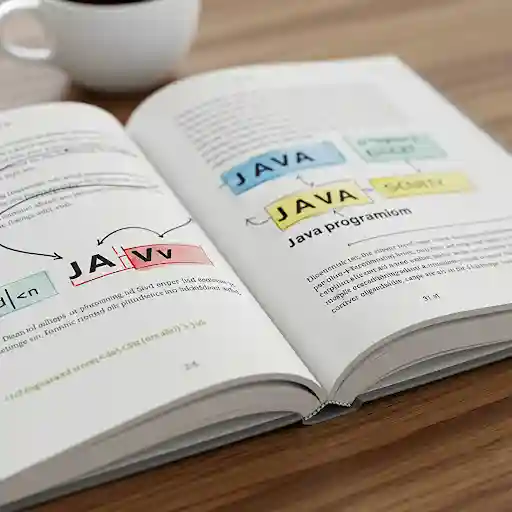Writing and Running Your First Java Program
diagram for Writing and Running Your First Java Program
Writing and Running Your First Java Program: A Beginner’s Guide
Java is one of the most popular programming languages in the world. It's known for its portability, object-oriented structure, and wide usage in enterprise applications. If you're just getting started, writing your first Java program is a great step toward becoming a developer.
This guide will walk you through installing Java, writing a simple program, and running it.

Step 1: Install Java Development Kit (JDK)
Before you can write Java code, you need the Java Development Kit (JDK) installed.
How to Install JDK:
Go to https://www.oracle.com/java/technologies/javase-downloads.html
Download and install the latest JDK version for your operating system.
Verify installation:
java -version
javac -version
Step 2: Set Up Your Development Environment
You can use any text editor or an Integrated Development Environment (IDE) like:
VS Code
IntelliJ IDEA
Eclipse
For beginners, VS Code or IntelliJ IDEA is recommended.
Step 3: Write Your First Java Program
Open your editor and create a file named HelloWorld.java. Then, type the following code:
public class HelloWorld {
public static void main(String[] args) {
System.out.println("Hello, World!");
}
}
Explanation:
public class HelloWorld: Defines a class named HelloWorld.main(String[] args): The entry point of any Java application.System.out.println: Prints text to the console.
Step 4: Compile the Java Program
Use the terminal or command prompt to compile the file:
javac HelloWorld.java
If there are no errors, it creates a HelloWorld.class file (bytecode).
Step 5: Run the Java Program
Execute the program with:
java HelloWorld
Output:
Hello, World!
Bonus Tip: Common Mistakes to Avoid
File name and class name should match.
Java is case-sensitive.
Don't forget the semicolon at the end of statements.
What’s Next?
Now that you've written your first Java program, explore:
Variables and data types
Control flow (if, switch, loops)
Object-Oriented Programming (OOP) basics
Java packages and modules
Conclusion
Writing and running your first Java program is the foundation of your programming journey. Java is a robust, scalable language that powers everything from Android apps to enterprise systems.
Keep practicing, and soon you'll be building more advanced applications with confidence!
Table of content
- Introduction to Java
- Java Basics
- Object-Oriented Programming (OOP) in Java
- Exception Handling in Java
- Types of Exceptions
- Try-Catch Block
- Finally Block and Throw/Throws
- Custom Exceptions
- Java Collections Framework
- Introduction to Collections
- List, Set, and Map Interfaces
- ArrayList vs LinkedList
- HashMap vs HashSet
- File Handling in Java
- Multithreading in Java
- Introduction to Threads
- Thread Lifecycle
- Creating Threads (Thread Class vs Runnable Interface)
- Synchronization and Deadlocks
- Networking in Java
- Java Networking Basics
- Socket Programming
- HTTP Requests in Java
- Java Database Connectivity (JDBC)
- Introduction to JDBC
- Connecting to MySQL Database
- Executing SQL Queries
- Using Prepared Statements
- Java Frameworks and Technologies
- Introduction to Spring Framework
- Hibernate ORM
- JavaFX for GUI Applications
- Java Interview Preparation
- Additional Java Resources
- Best Books to Learn Java
- Java Certification Guide
- Online Java Practice Platforms